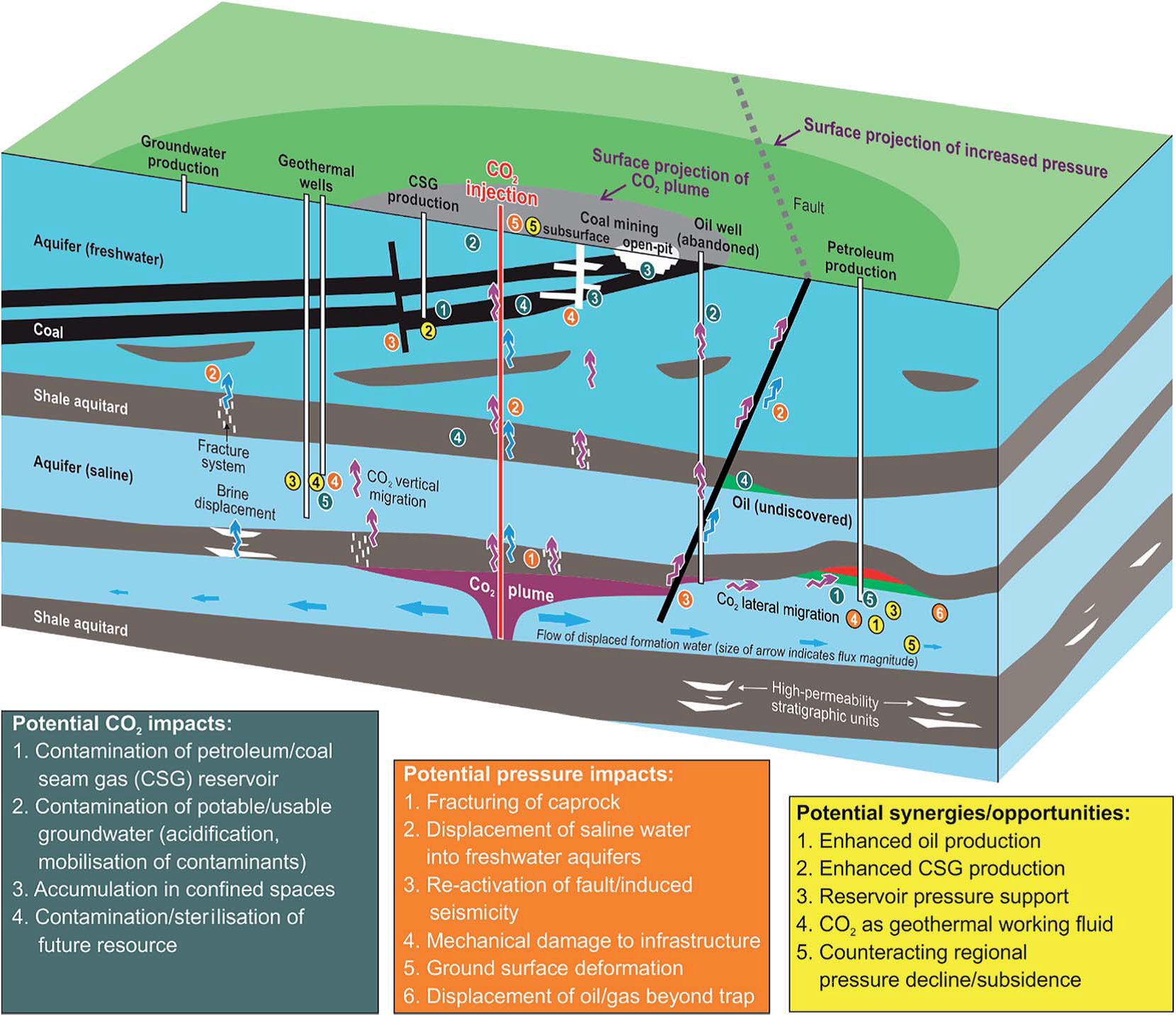Humans are continuing to release increasing amounts of greenhouse gases to the atmosphere that have been implicated as key contributors to climate change. One major greenhouse gas is CO2. It is estimated that geological storage could result in a 17% reduction in atmospheric CO2 by 2050. Such projects aim to use sedimentary basins as they are believed to be the safest option for long-term storage of CO2 and other greenhouse gases. However, sedimentary basins are also valued for a range of extractable natural resources such as groundwater, oil and gas, and geothermal energy. Thus, there is a need to understand the potential interactions between these resources and subsurface storage of CO2 when targeting a particular site for CO2 storage.
A recently published study involving researchers from various institutes in Western Australia explain the potential risks involved with geological CO2 storage. Considering all the potential interactions between basin resource use and CO2 storage, the authors outline a Framework for Basin Resource Management Strategy (FBRMS) for optimizing interactions that may occur during the management of sedimentary basins.
Potential impacts of CO2 geological storage on other basin resources (reproduced from K. Michael
et al., EAGE Third Sustainable Earth Sciences 2015 Conference, DOI: 10.3997/2214-4609.201414262)
The initial stage of the FBRMS is an assessment of potential basins for CO2 storage based on containment potential of the subsurface. Optimal conditions include thick layers of low permeability rocks such as shales and anhydrites that can effectively cap the CO2. Lateral containment should be provided by lateral decreases in permeability, low permeability faults, or, in the absence of physical barriers, residual trapping, dissolution into water and mineral formation via reactions with the subsurface matrix. In addition to geologic characterization, modelling, monitoring and risk assessment are crucial for verifying long-term CO2 containment.
Also considered in the FBRMS are the two general means by which CO2 storage can affect other basin resources: migration and increasing basin pressure. Vertical or horizontal migration may result in contamination of natural gas or another currently used or potentially extractable resource.
Once CO2 is present in the subsurface, the future potential use of the injected area is instantly limited. An important concern associated with using shale basins is that shale may be used as an unconventional gas resource in future, and the methods for utilizing this resource negate its effectiveness as a long-term cap for CO2 storage. Though the probability is extremely low, increasing subsurface pressure from CO2 injection could also force saline water upwards along a wellbore or through existing fractures into groundwater resources, or may even cause fractures. Regardless of the likelihood, identifying all of these risks is an important facet of the FBRMS, presumably leading to relevant monitoring activities. On the other hand, increased pressure could also be beneficial in counteracting reduced pressure in mature oil or gas fields, low groundwater levels, or subsidence.
The FBRMS integrates all of these concerns to evaluate the likelihood of various basin resource-storage interactions, how beneficial or detrimental the interactions would be, and to determine how best to manage these interactions. It is intended to be used by various project stakeholders throughout the lifetime of a project, and may require intensive data collection or expert risk assessment depending on the individual project being assessed.
To read the full paper for free*, click the link below:
Framework for the assessment of interaction between CO2 geological storage and other sedimentary basin resources
K. Michael, S. Whittaker, S. Varma, E. Bekele, L. Langhi, J. Hodgkinson, and B. Harris
Environ. Sci.: Processes Impacts, 2016, 18, 164-175
DOI: 10.1039/C5EM00539F
—————-

About the webwriter
Abha Parajulee is a Ph.D. student at the University of Toronto Scarborough. She is interested in water resources and the behavior of organic contaminants in urban environments.
—————-
* Access is free until 01/06/2016 through a registered RSC account.











